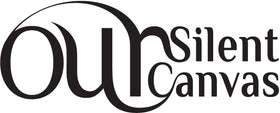

Tsyphur Zalan
Tsyphur Zalan is the experimental, electronic side project of Christopher Bono.
Bono is a composer, producer, frontman of Ghost Against Ghost, and director of experimental record label Our Silent Canvas.
The name "Tsyphur Zalan" came to me in 2002 within a fuzzy headed dream state while waking one college morning. At the time I had just begun playing and experimenting with music, forfeiting a professional baseball career for longhair and weed. I wrote the strange name in a journal that I kept at my bedside in anticipation of late night inspiration. The name came to me exactly like the credits in Star Wars (without the orchestral music), floating sideways in a space like aura. It was super weird. But I always found it fascinating, considering it was such a bizarre name. I performed under the name for two years living in Boston, but soon pulled away from its exotic sounding nature.
Several years later, to break up the mundane routine of a longstanding studio project, I started working on some quick experimental electronic songs/tracks. As these started to pile up I realized they could be releases under that strange Tsyphur Zalan name. It seemed to fit.
So in 2015, I released the first official Tsyphur album, Sink. It got a premiere at Vice’s Creator’s Project for the video I did with genius stop animation director Toby Stretch. I then did a single, “The Theatre is the Spectacle of the Sublime”. The single was a very dark, halloween themed track that also turned into a video with Toby and received a premiere by Nowness.
The Oceanic series is a series of drone ambient albums I describe to friends as “music composed for airplane announcements”. However, it was originally designed for meditation and background ambiance.
The material was originally recorded as studies for two live immersive and interactive sound bath performances I did last year. However, I quickly realized there was a lot of great material for a series of ambient albums. The music was all performed and mixed live in the studio, no overdubs no computers, etc. All synthesizers and sounds were either analog or organic, which gives the album a classic kind of feel.
In Joy!
Christopher
